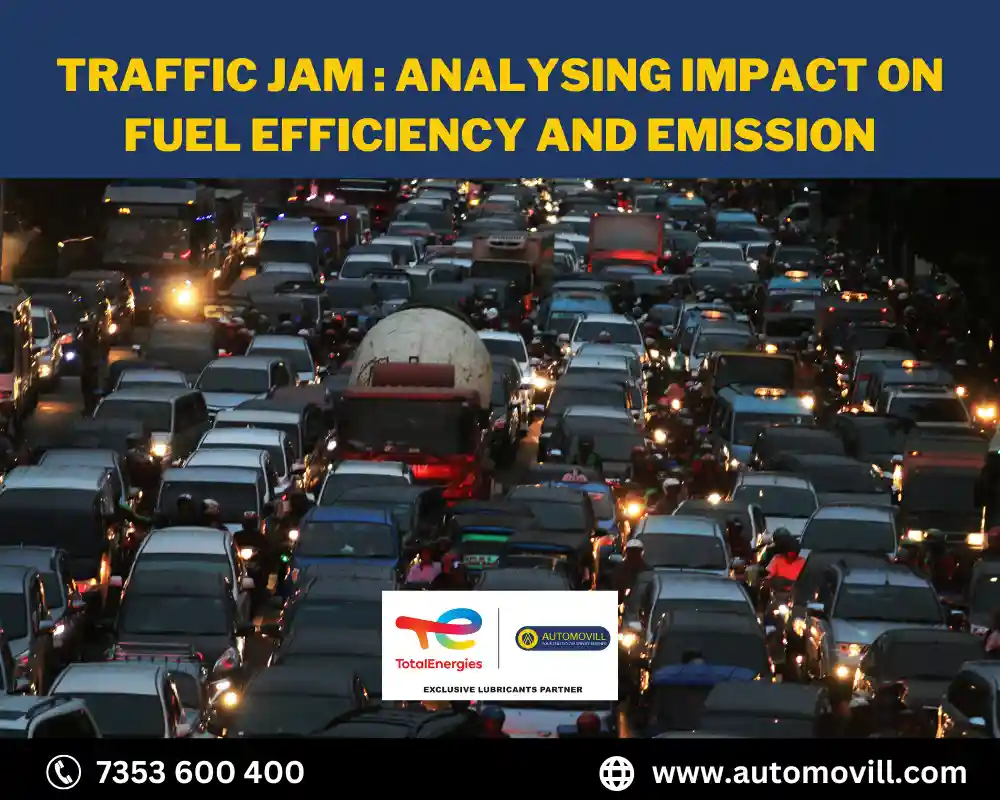
Did you ever think how much traffic jams impact on our country’s economy and environment?
In India, for example, if fuel consumption by an average of 20% by traffic jams, this means that for every 100 kilometers traveled, an additional 20 liters of fuel are burned in congested traffic.
IIT Madras study estimated an annual congestion cost of Rs 54,000 crore in 2013.
There are a number of reasons why traffic jams lead to increased fuel consumption:
- First, when vehicles are constantly accelerating and decelerating, they are less fuel-efficient than when they are cruising at a constant speed.
- Second, the stop-and-go nature of driving in congested traffic can cause engines to overheat, which can also lead to increased fuel consumption.
In addition to increased fuel consumption, traffic jams also lead to an increase in emissions. This is because the exhaust gases from vehicles are released more frequently when they are driving in stop-and-go traffic.
The most common pollutants emitted from vehicles include carbon monoxide, nitrogen oxides, and particulate matter. These pollutants can have a number of negative health effects, including respiratory problems, heart disease, and cancer.
Fuel Efficiency during Traffic Jams
- Idling in traffic consumes fuel even when the vehicle isn’t moving. This idling time can significantly affect fuel efficiency.
- On average, a car consumes approximately 0.6 to 1.2 liters of fuel per hour while idling, depending on the engine size and age of the vehicle.
Impact on Fuel Consumption
- Studies suggest that fuel consumption can increase by up to 40% in dense traffic compared to free-flowing conditions.
- In heavy congestion, vehicles frequently accelerate and decelerate, leading to more fuel consumption than when driving at a constant speed.
Emission Levels during Traffic Jams
- Traffic congestion contributes substantially to greenhouse gas emissions and air pollution.
- The primary pollutants emitted during traffic jams include carbon dioxide (CO2), nitrogen oxides (NOx), volatile organic compounds (VOCs), and particulate matter (PM).
Contribution to Air Pollution
- It is estimated that vehicles in traffic jams can emit up to 40% more pollutants compared to when they are moving smoothly.
- Traffic congestion worsens air quality, leading to adverse health effects, especially for vulnerable groups such as children, the elderly, and individuals with respiratory conditions.
What IIT Delhi Study Says?
According to a study by the Indian Institute of Technology, Delhi, traffic congestion in India is estimated to waste an average of 20% of fuel. This means that for every 100 kilometers traveled, an additional 20 liters of fuel are burned in congested traffic.
In 2022, the total amount of fuel wasted in India due to traffic jams is estimated to be around 100 billion liters. This is equivalent to the annual fuel consumption of a country like Sri Lanka.
The impact of traffic jams on fuel efficiency is particularly severe in India, as the country has a large number of old and inefficient vehicles. In addition, the roads in India are often congested and poorly maintained, which further contributes to fuel waste.
The wasted fuel due to traffic jams has a number of negative consequences. It contributes to air pollution, climate change, and lost productivity. It also puts a strain on the country’s economy.
The report also estimates that traffic congestion is responsible for an additional 1 billion tonnes of CO2 emissions, 500 million tonnes of NOx emissions, and 500 million tonnes of PM emissions each year.
